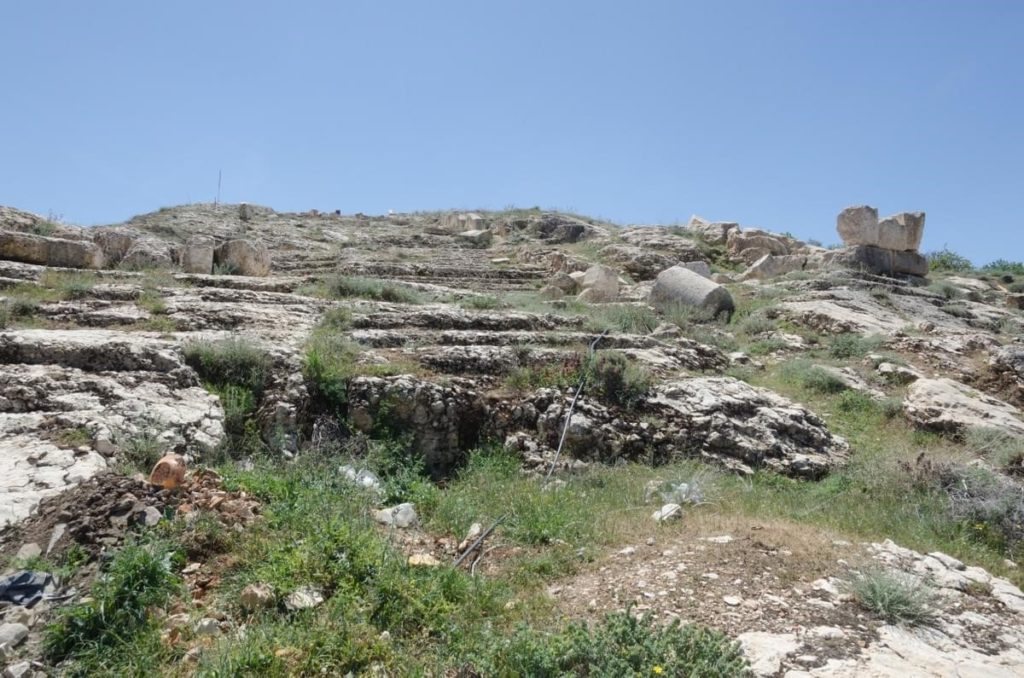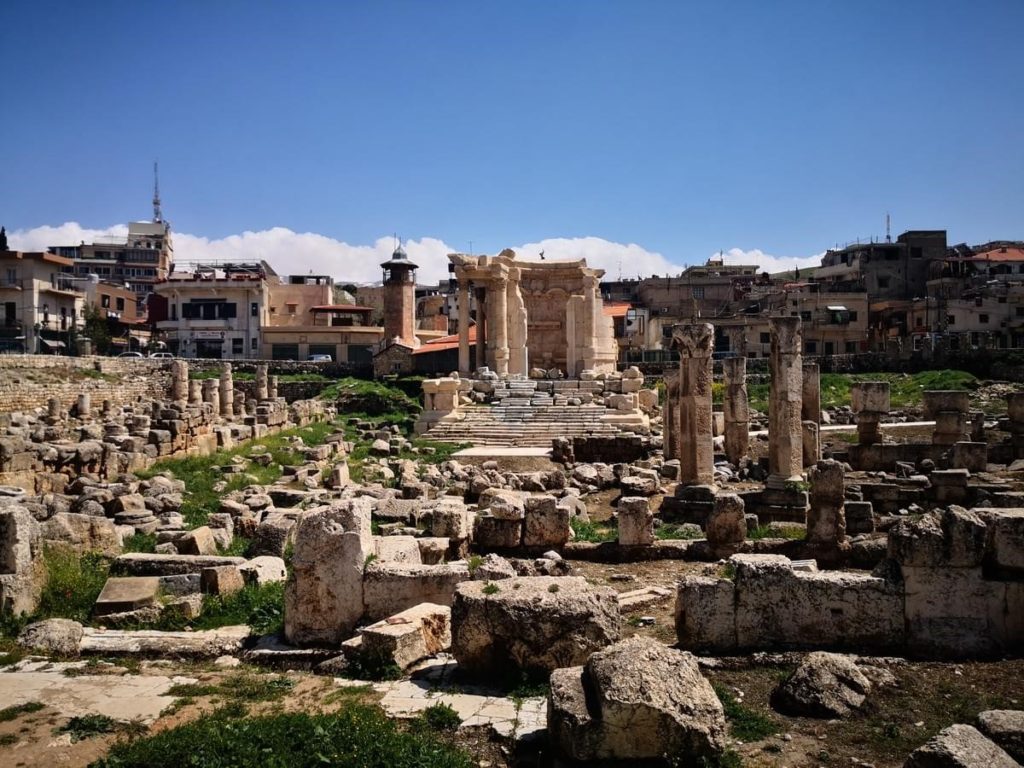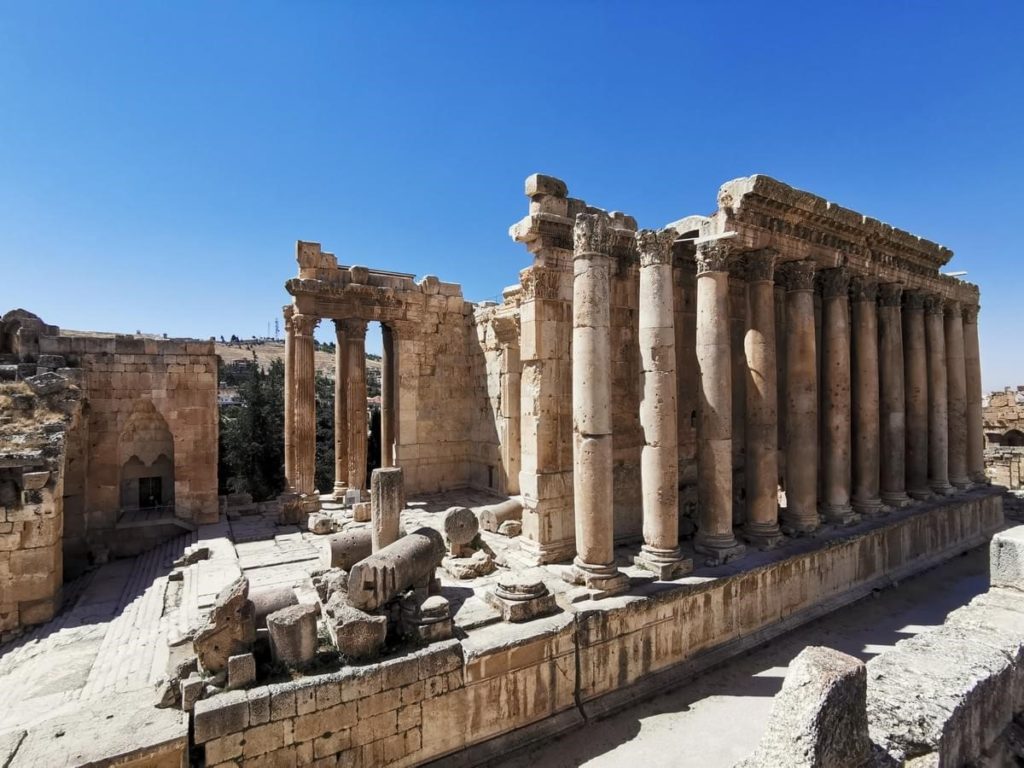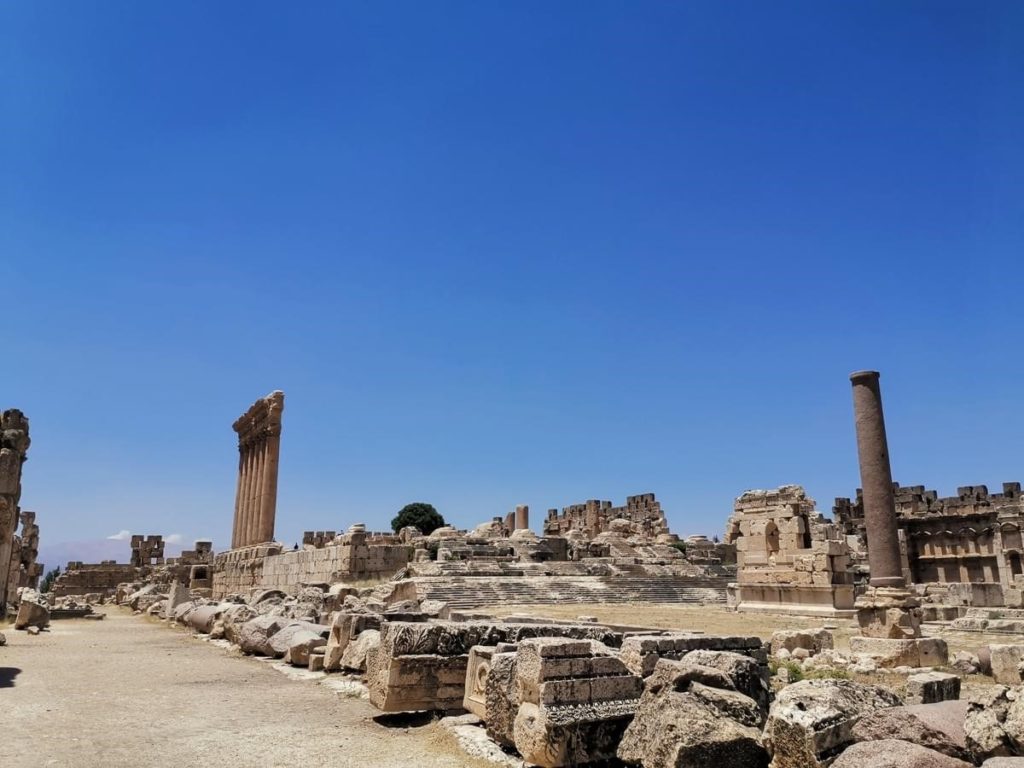Baalbek city, inhabited since the 3rd millennium BC, is located in the northern Bekaa plain at the crossroads of oriental and occidental influences.
It is known for its religious aw-inspiring mega-structures of antiquity.
Etymology
Baalbek –Ba’al (Lord) Bek (Spring), God of the Spring.
Heliopolis – Helio (Helios, Greek Sun God) polis (city), city of the sun. Baalbek benefits from approx 300 days of sunlight, thus its Greek name.
Colonia Julia Augusta Felix Heliopolitana – The name given to Baalbek when it became a Roman colony during the 1st century AD
Qala’at Baalbek (fortress of Baalbek) – this designation dates back to the 12th century AD when the Ayyoubid Emirs conquered the city and turned the temple complex into a Citadel.
Location
Being at the center of strategic trade routes, surrounded by fertile lands with year-round flowing rivers, the city’s unique and important location was rewarded by the construction of colossal temples complex, characterized by a blend of Hellenistic-Roman architecture with oriental design and effects.
Temples
Baalbek houses 5 main temples, all of which were built between the end of the 1st Century BC and the 3rd Century AD, noting that most of the temples were never finalized.
The Temple of Mercury
The temple of Mercury – Mercury being the swift messenger of the ancient Gods, is located on Sheikh Abdallah’s hill, south of the city.
Nothing remains of the temple except its entrance stairs and a small part of its podium.

The temple of the Muses, the 9 Greek Goddesses of the arts and sciences and daughters of Zeus, is located on the eastern side of the temple complex.
Little remain of the temple, such as the podium, some columns, and the entrance stairs.

The Temple of Venus
The temple of Venus, the Goddess of love and fertility, is a circular and well preserved structure with a big square entrance, located on the eastern side of the temple complex.
The temple was converted into a church during the Byzantine era, and was dedicated to St. Barbara, the city’s Christian martyr.
An ongoing debate, based on archaeological studies and analysis, suggests that the temple of the Muses might be the temple of Tychee, Goddess of chance and fortune.

The Temple of Bacchus
The temple of Bacchus, God of agriculture and wine, is one of the best preserved temples of the Roman world.
The rectangular temple structure is characterized by the mixture of rounded and fluted columns, by a beautifully decorated 11m height main gate and by its outdoor and indoor reliefs that depict religious ceremonies and the deities venerated in Baalbek.
Based on archaeological studies and analysis, many scholars suggest that the temple is falsely attributed to Bacchus, but should be instead dedicated to the Syrian Goddess of fertility Atargatis.
On the eastern side of the staircase, a 12th century Mamluk defensive tower was erected as part of the temple’s fortifications
On the southern side, one can find the ruins of a mosque that was built between the 7th and the 8th century AD.

The Temple of Jupiter
The temple of Jupiter Optimus Maximus Heliopolitanus, the Storm God and the main deity of the city, is a mega structure that is considered to be the largest of all temples of the Roman world. The sanctuary is divided into 4 main sections:
1- The Propylaea, an imposing entrance decorated with 12 pink granite columns, and flanked by 2 towers, with a former 50m width staircase.
2- The Hexagonal Court, once encircled by 46 pink granite columns, was refurbished by the Ayyoubids for military use.
It is believed that the Hexagonal Court housed markets that sell objects of sacrifices, as well as preparation chambers where believers would get ready to proceed into the next section of the complex and take part of the religious ceremonies.
3- The Great Court, once encircled by 128 pink granite columns, is known for its 2 well-preserved sacred lakes decorated with bas-relief depicting Greco-Roman deities and myths, its 12 exedras that presumably once housed the biggest number of statutes for the Gods and emperors (270 statutes), and finally its 2 altars that were used for sacrifices, part of the ceremonial rituals.
A basilica was constructed between the 4th and the 5th century AD that extended from the sacred temple staircase to the middle of the Great Court yard, thus replacing the 2 altars (reconstructed later on by archaeologists).
Underneath the court yard is a series of interconnected tunnels that were once used as storage spaces and soldier habitat.
Today a section of the tunnel has been converted into a beautiful museum that tells the story of Baalbek in a detailed manner.
4- The Sacred Temple, the highest structure of the complex, seating on a mega podium that consists of 3 gigantic stones (The Trilithon), each weighing approx 800 tons, was once encircled by 54 – 22m height columns (only 6 columns remain standing). The Trilithon are accessible from the western side of the Propylaea stair case.
Under Justinian rule, 8 columns from the sacred temple were taken to Istanbul for incorporation into the Haiga Sophia structure.
The sacred temple would have housed an immense golden statute of the deity that would shine at each morning sunlight.
It is important to note that a total number of 186 pink granite columns, found in the Propylaea, the Hexagonal court and the Great Court, originated from the Aswan quarry in Egypt, shipped to the port of Tripoli via the Nile and the Mediterranean sea, and reached Baalbek from the northern side of the Bekaa valley.

All 5 temples suffered enormously from stone pillaging for the reuse in other structures, and from destruction caused by wars, natural disasters and neglect. However, 2 temples were lucky enough to withstand the veil of time: The Bacchus temple, since it was used by the Arabs as their main military headquarter, thus it benefited from an important layer of fortification, and The Venus temple which was continuously used in the post-pagan era as a church until the Ottoman era.
Baalbek, the jewel of the Bekaa, remains the most visited monument in Lebanon by locals and foreigners, continuously attracting historians, architects and archaeologists from around the world to study its mega-structures and unearth its secrets.
Karim Sokhn
Founder/Tour Operator
References:
BAAL, issue 15
Baalbek: Heliopolis, City Of The Sun – Nina Jidejian
La vie Religieuse Au Liban Sous L’Empire Romain – Julien Aliquo

